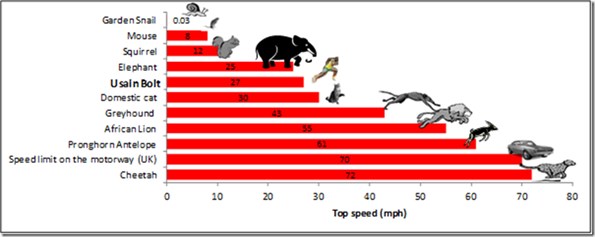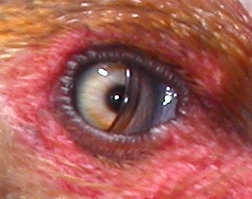The link: The Perfect Yellow, and more
The Story:
There are colors we can’t see. All around us, every day we’re missing out on something that certain other members of the animal kingdom take for granted.
Just like dogs can hear sounds outside our range of hearing, animals like birds and the boring old goldfish can see colors beyond what’s visible to us.
In terms of the full spectrum of light, we’re practically blind. The light that’s visible to us is a tiny part of what’s out there.

From ultraviolet to visible light to radio waves, they’re all different kinds of the same thing.
Some of the birds you see outside might look drab, but actually have brilliant colors in the part of the spectrum beyond what we can see. They’re seeing something we can’t even imagine.
The NPR show RadioLab has an awesome story on this unseen rainbow.
Key points are:
- An American scientist, Jay Neitz, has succeeded in giving the ability to see the color red to an animal formerly unable to see it.
- He’s working on ways to bring color to colorblind people.
- Neitz also says it might be possible to give people the ability to perceive colors beyond the normal human range.
- But there may already be such people in the world. There are some rare women (normal-looking mutants called tetrachromats) who were born with extra color receptors in their eyes, enabling them at least in principle to see extra color.
The Internet has allowed the discovery of such people to happen. Before, it was much harder for researchers to connect with the small percentage of the population with this genetic variation. British neuroscientist Gabriele Jordan has been searching for such people for two decades. If you think you might be one, and ever plan to be in England, you can contact her.
Megan Arquette is a blogger and possible tetrachromat who was featured on a Japanese science show earlier this year.
Another is an Australian artist named Concetta Antico, whose genetics Jay Neitz is studying.
Study of tetrachromacy is still in its infancy. Someday within our lifetimes, it may be possible for ordinary people to see what’s been right in front of us all along. The limits of our perceptions represent a clear and definable limit to the human imagination. You can’t imagine what a bird sees any more than a congenitally blind person can imagine the color blue.
But we’re beginning to push those limits.







